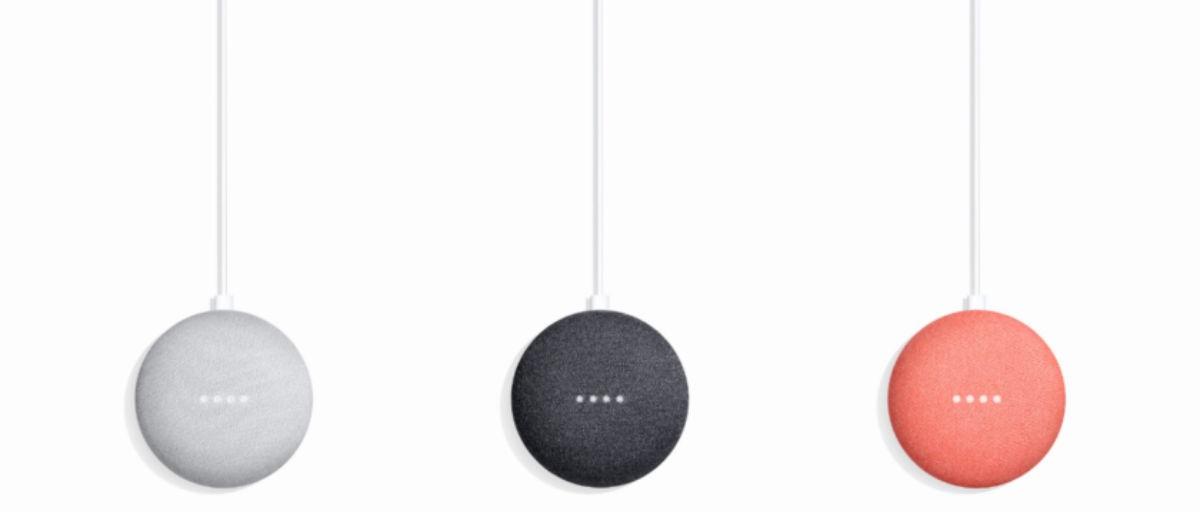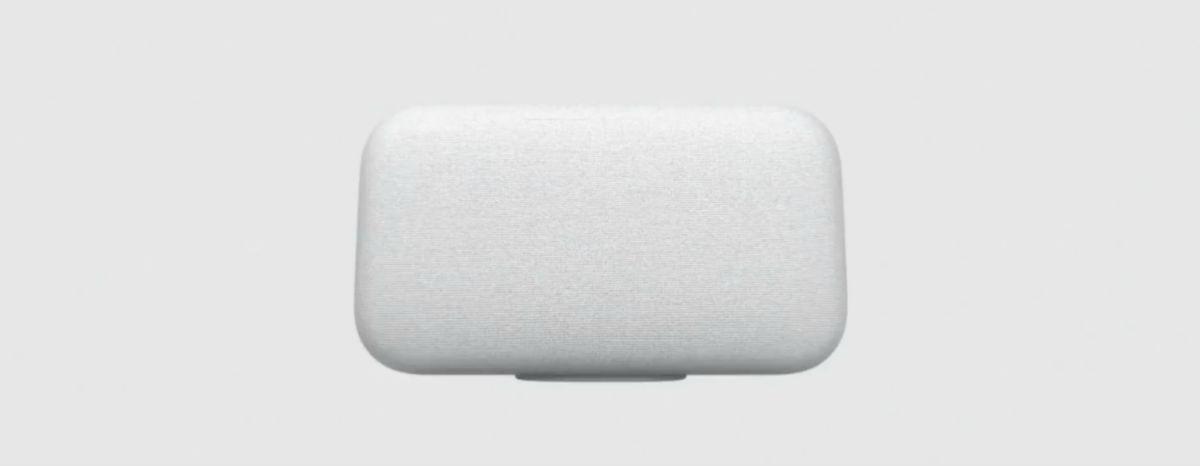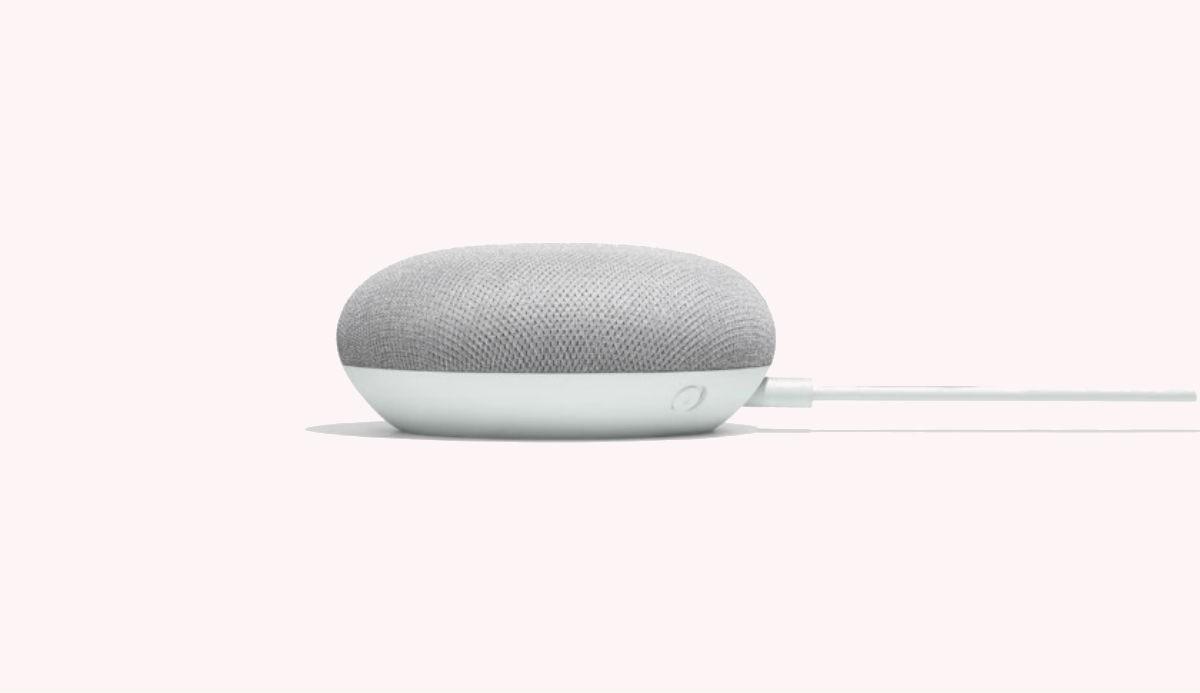Google today revealed two additions to the Google Home family today – Google Home Mini, a smaller, more affordable version of its Google Home voice activated assistant as well as Google Home Max, a higher-end version.
Google also showed off a variety of family-focused Google Assistant features, including the ability to Broadcast a message to connected Google Home devices, with the company using waking up your children for school as a use-case example. The tech giant is also opening up its ‘Action on Google’ platform to allow developers to create more family-focused experiences.

Google Home Mini
The puck-shaped device has a much smaller form factor than the original Google Home, but keeps most of the functionality. You’ll still be able to command the Home Mini with all of your favorite voice commands and the four LED’s on top will indicate when you’ve triggered the device or when its “thinking”.
Despite its $49 price tag, the Home Mini will be able to do almost everything the standard $129 Google Home can do. If you have connected electronics like Philips Hue Bulbs or a Nest Thermostat, you can still use your voice to control those devices. If you have a Chromecast hooked up to your TV, you can still tell Home Mini to cast your favorite YouTube videos to it just like you would with Google Home. All of the things you’d normally command Google Home to do, you can do with Google Home Mini too.
“Our visions is to build simple helpful solutions that work in the background,” said Isabelle Olsson, lead design for Home hardware, during Google’s presentation.
“It’s sleek and smooth, with no corners or edges and it’s small enough to be placed anywhere in your home. It makes Google Home accessible to more people in more rooms.”
The difference between the two speakers is largely centered around the hardware inside. While components are getting smaller every day, we’re not at the point yet where Google can smush down a Home into the size of a Home Mini. The sad fact is that it had to leave some things out to get the size down. Google had to settle for smaller drivers in the Mini which reduce the volume it can put out. Additionally, you’re not going to get the same kind of sound quality either.
The color choices are different too. The Home Mini will come in Chalk, Charcoal, and Coral. Both the Charcoal and Coral will have matching colored bases, but the Chalk colored speaker will switch it up with a white base for a nice two-tone look. Unfortunately, the interchangeable bases of the Google Home are gone. In their place are a permanent cloth top and hard plastic bottom.
Google is positioning the Home Mini as a speaker that can do everything the original can, just in a smaller package. In marketing material, the Mini is being called a “powerful little helper” and the little part certainly rings true. While the diameter of the device is slightly larger, its half the height and weighs less too.
Google isn’t wasting any time in making the Google Home Mini available. Pre-orders will go live soon, but you’ll have to wait a few weeks to get your hands on it. The Google Home Mini won’t arrive in stores until October 19. In addition to the six territories that Home is available right now, Japan will be joining the ranks later this week.

Google Home Max
Google says the Max is 20 times more powerful than the Google Home and features new technology called ‘Smart Sound’ that’s capable of analyzing the room around the device for a more accurate acoustic experience, similar to Sonos’ high-end speakers, as well as modern surround sound systems and Apple’s upcoming HomePod.
The speaker also includes far-field microphones that the company says will allow users to still give the Home Max voice commands when music is playing. In terms of additional specs, Google says that the device works seamlessly with the Google Home family devices and that it features 4.5-inch subwoofers and “acoustically transparent fabric.”
The new, larger Home speaker is clearly intended to be an answer to critics who suggested the original Home lacked good audio quality by providing something for users who care more about sound. It’s also likely a move that will help address forthcoming competition for Home from Apple, which is set to launch its own Siri-enabled premium speaker, the HomePod, by the end of this year.
It can tune its audio to its own space, analyzing the sound coming from the speaker using its built in microphones to determine the best equalizer settings. This is called Smart Sound, and it evolves over time and based on where you move the speaker, using built-in machine learning. It has Cast functionality, as well as input via stereo 3.5 mm jack.
Home Max can output sound that’s up to 20 times more powerful than the standard version of Home, Google says, and it has two 4.5 inch woofers on board with two 0.7 inch custom-built tuners. It can sit in either vertical or horizontal orientation, and it comes in both ‘chalk’ and ‘charcoal.’
Of course, this bigger speaker also includes a noise isolating array that makes it work even in open rooms with background noise, and it’s Assistant-enabled, so you can use it to control your music playback via voice, or manage your smart home devices, set yourself reminders, alarms, and timers and much more.
Google Home Max is available in December for $399 USD but only in the U.S., though Google mentions that “more regions are coming soon.”



